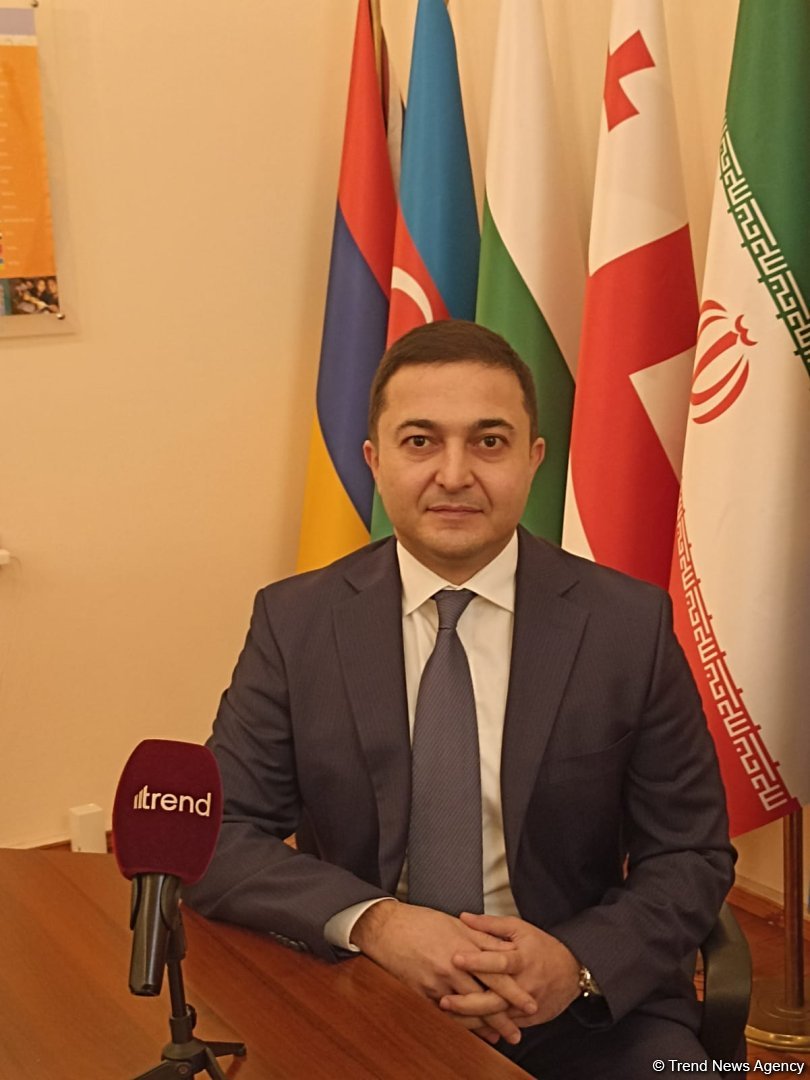BAKU, Azerbaijan, December 10. TRACECA, an international transport program involving the European Union and 12 member states of the Eastern European, Caucasus, and Central Asian regions, has a clear plan of activities for 2024-2026, Permanent Representative (National Secretary) of the IGC TRACECA in Azerbaijan National Secretaries Rufat Bayramov told Trend.
TRACECA celebrated its 30th anniversary in 2023.
The program's strategy seeks to synthesize the second long-term strategy (covering the period 2016-2026) for the development of the Europe-South Caucasus-Central Asia transport corridor and lay the groundwork for future effective actions.
According to Bayramov, the plan is to address new global challenges and increase the attractiveness of the international corridor by improving both hard infrastructure (economic entities such as railroads, ports, containers, and rolling stock) and soft infrastructure (legal and information bases, automation issues).
He added that there is no doubt about the demand for this corridor; the interest in the corridor is not waning, even though its development is going through various stages (1993–2016: direct financing of projects by the European Commission; 2016–2026: self-sufficiency and financing in the form of contributions from member states).
He also mentioned that TRACECA was enriched with a new member, Turkmenistan, in the fall of 2023, which opens up prospects for increasing cargo traffic and attracting new cargo from both China and Central Asian countries, which have a huge potential for economic growth.
"Interest in TRACECA has increased due to Russia's war with Ukraine; our corridor and region are more topical than ever. There was a big surge of activity on TRACECA in 2019, but it is quite possible to bring it back now. Various programs and projects aimed at making this route even more competitive are being worked out for this purpose," Bayramov noted.
He added that Azerbaijan's action plan to increase transit transportation for 2024–2026 fits into the framework of TRACECA development and will give the international corridor an additional "boost.".
"Azerbaijan has a developed infrastructure, and steps have been outlined to improve this infrastructure. The country is integrated into numerous international trade and transportation projects. This is both positive and significant for the development of the entire Europe-South Caucasus-Central Asia corridor," Bayramov said.
He stressed that it is beneficial for the TRACECA member states that this program supports cooperation with the UN, the World Bank (WB), the Asian Development Bank (ADB), the European Bank for Reconstruction and Development (EBRD), CAREC, TITR, the Organization of Turkic Speaking States, and other entities.
"Globally, 96 percent of transportation was by sea; however, it takes 30-40 days. TRACECA can hardly compete with sea freight transportation in terms of price, but in terms of time, it is quite achievable. Thus, cargo delivery from Asia to Europe along our corridor under ideal conditions takes 12-14 days (verified data). The West understands this, as do Kazakhstan and Uzbekistan (the endpoints of the corridor), and they are taking real steps to improve the performance of the corridor," said the TRACECA representative.
He named the introduction of digital solutions to ensure the passage of cargo, an increase in the container and ferry fleet, and the development of port infrastructure on the Caspian Sea among the priorities for 2024-2026.
"We have a concept of the TRACECA digital corridor until 2030. We want digitalization to cover all types of transport, the work of shippers, cargo carriers, and all inspection structures. There are several working groups within TRACECA. We are moving thoughtfully as we want to develop an optimal solution to improve the efficiency of our corridor," he said.
According to Bayramov, considering the digitalization process in 2024, a single universal electronic consignment note between Türkiye, Georgia, Azerbaijan, Ukraine, and Kazakhstan (CIM/SMGS) may become officially operational. The experts from a specialized UN program have greatly assisted in the development of the consignment.
"The digitalization of the corridor will increase containerization, which in the future can transport up to 600,000 containers per year (10 times more than the current limit). Many shippers prefer container transportation, and this aspect will be taken into account in the work for the period 2024-2026," he concluded.







